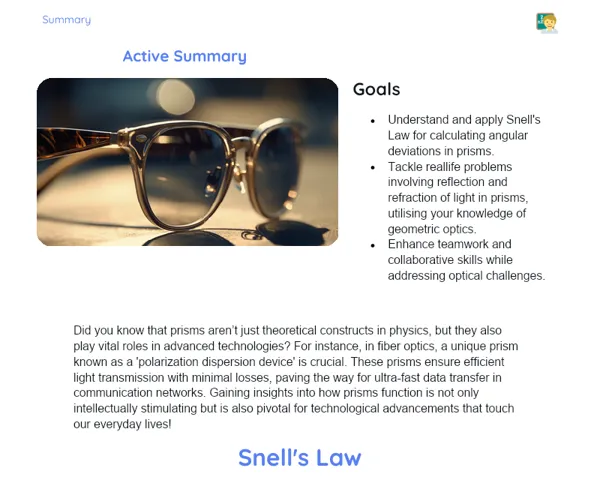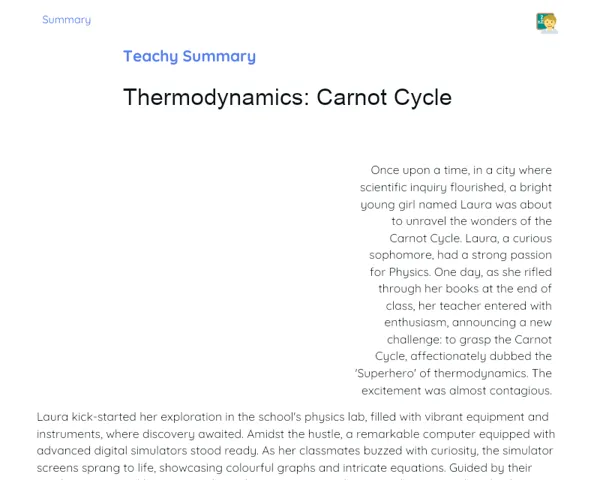Summary Tradisional | Dynamics: Newton's 2nd Law
Contextualization
Newton's Second Law, often referred to as the Fundamental Principle of Dynamics, is a cornerstone of physics that explains how the force applied to an object relates to its mass and the resulting acceleration. Denoted by the formula F = ma—where F represents the net force, m is the mass of the object, and a is the acceleration—this law equips us to predict how an object will move under the influence of external forces. Grasping this relationship is essential for solving motion problems across various scenarios, from falling objects to vehicle movements and launching rockets into space.
The field of dynamics, which delves into the reasons behind motion, leverages Newton's Second Law to elucidate and compute the acceleration of an object based on the forces it experiences. For instance, while pushing a shopping cart, the force you exert determines how quickly the cart accelerates, factoring in its mass and the friction with the ground. This law also comes into play in more complex scenarios, such as calculating the force required to launch satellites and spacecraft. Hence, Newton's Second Law serves as an invaluable asset for comprehending and forecasting the behaviour of moving bodies.
To Remember!
Definition of Newton's Second Law
Newton's Second Law, known as the Fundamental Principle of Dynamics, describes the connection between the applied force on an object, its mass, and the resultant acceleration. The formula that encapsulates this law is F = ma, where F signifies the net force, m is the object's mass, and a indicates its acceleration. This principle enables us to ascertain an object's acceleration when given the applied force and its mass.
A clear and accurate definition of Newton's Second Law is vital for decoding numerous physical phenomena. When a force acts on an object, it triggers a change in that object's state of motion, classified as acceleration. Acceleration is directly proportional to the applied force and inversely proportional to the mass.
In practical terms, this signifies that for an object with a constant mass, greater force leads to increased acceleration. Similarly, for a constant force, an object with a larger mass will exhibit less acceleration. This relationship is fundamental for addressing dynamics problems in various situations, from the descent of objects to vehicle movements.
-
The formula for Newton's Second Law is F = ma.
-
Acceleration is directly proportional to the applied force.
-
Acceleration is inversely proportional to the mass of the object.
Net Force
The net force represents the vector sum of all forces acting on a body. Often, an object is subjected to multiple forces simultaneously, and the net force is the aggregation of those forces. To determine the net force, both the magnitude and the direction of each acting force must be considered.
When several forces are in play on an object, the net force dictates its acceleration in accordance with Newton's Second Law. If forces act in opposing directions, they might partially or wholly counteract one another, resulting in a smaller or zero net force. Conversely, forces acting in tandem will sum up, leading to a greater net force.
Understanding how to calculate the net force is imperative for resolving dynamic issues. For example, when pushing a shopping cart, the applied force, alongside friction and other forces, dictates the cart's acceleration. Similarly, in more intricate scenarios such as vehicle motion or rocket launches, the net force significantly influences the predicted behavior of the system.
-
The net force is the vector sum of all acting forces.
-
It determines the acceleration of the object as per Newton's Second Law.
-
Calculating the net force involves assessing the magnitude and direction of the forces.
Mass and Acceleration
An object's mass is a measure of its inertia, or its resistance to alterations in its state of motion. In the context of Newton's Second Law, mass is pivotal in influencing the acceleration that results from an applied force. The larger the mass, the smaller the acceleration for the same applied force.
This inverse relationship between mass and acceleration is observable in various scenarios. For instance, a compact car will accelerate faster than a truck when both are subjected to identical forces, since the truck, with its greater mass, resists changes in its state of motion more robustly.
When addressing dynamics problems, it's critical to consider the object's mass to ascertain the correct acceleration. The equation F = ma indicates that for a constant force, acceleration is inversely related to mass. Therefore, if an object's mass doubles, its acceleration is halved while maintaining the force.
-
Mass measures an object's inertia.
-
Greater mass leads to lower acceleration for the same exerted force.
-
The connection between mass and acceleration is inversely proportional.
Practical Examples
We can observe the practical applications of Newton's Second Law in numerous everyday contexts. A quintessential example is the movement of a car. When a driver accelerates the vehicle, the engine applies a force that, according to Newton's Second Law, produces the car's acceleration. The extent of this acceleration depends on the force exerted by the engine and the weight of the car.
Another illustrative example is a rocket launch. The rocket's engines apply a tremendous force downward; according to Newton's Second Law, this force generates an upward acceleration that enables the rocket to break free from Earth's gravitational pull. The mass of the rocket and the engine's force are critical factors in determining the rocket's acceleration and path.
Even simple tasks, such as computing the force required to lift a heavy item, exemplify Newton's Second Law. When raising an object, the applied force must be adequate to counteract the gravitational force exerted on the object's mass, resulting in upward acceleration.
-
Car movements and rocket launches exemplify Newton's Second Law.
-
The applied force and the object's mass dictate the resulting acceleration.
-
Real-world problems effectively illustrate the practical uses of Newton's Second Law.
Key Terms
-
Newton's Second Law: A fundamental law of physics that links force, mass, and acceleration.
-
Net Force: The vector sum of all forces acting on a body.
-
Acceleration: The change in an object's velocity due to applied force.
-
Mass: A measure of an object's inertia or resistance to motion changes.
-
Dynamics: The branch of physics that studies the causes of motion in objects.
Important Conclusions
Newton's Second Law stands as a foundational principle for comprehending the dynamics of motion, elucidating the relationship between force, mass, and acceleration. The formula F = ma lets us determine an object's acceleration when we are aware of the applied force and its mass, making it crucial for addressing issues across varied contexts, from simple movements to complex launches like that of rockets.
The net force, the vector sum of all exerted forces on a body, establishes the acceleration experienced by an object. Proficiently calculating and analyzing this force is essential for predicting the behavior of dynamic systems, whether in everyday scenarios such as pushing a cart or in sophisticated situations like vehicle operations and space missions.
The inverse relationship between mass and acceleration means that, for a constant force, objects with larger mass will demonstrate lesser acceleration. This insight is applicable in numerous practical physics challenges, rendering Newton's Second Law an indispensable resource for understanding and anticipating the motion of bodies, both on Earth and beyond.
Study Tips
-
Review the practical examples discussed in class by revisiting the problems to reinforce your grasp of the formula F = ma and its applicability.
-
Practice additional problems from your textbook and explore online exercises involving Newton's Second Law, emphasizing diverse scenarios to broaden the applications.
-
Collaborate in study groups to discuss and tackle problems together, as sharing ideas and strategies can enhance understanding and introduce fresh approaches to solving dynamics issues.



